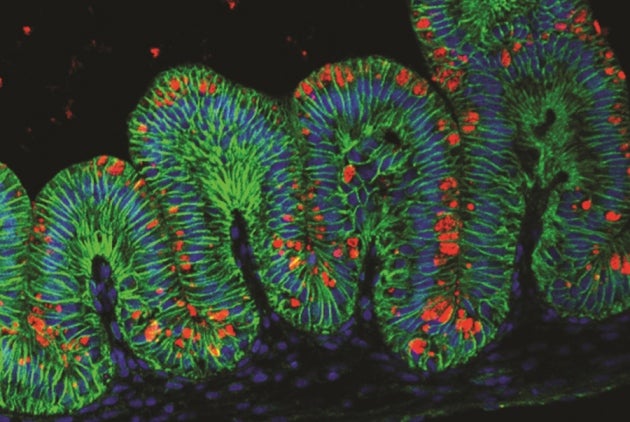The Independent's journalism is supported by our readers. When you purchase through links on our site, we may earn commission.
Lab-grown 'miniature stomachs' created from human stem cells for the first time
The organoids offer the perfect tool for studying stomach diseases, and could lead to the creation of intestinal 'patches' to help ulcer sufferers

Scientists have successfully grown the first fully functioning miniature human stomach from pluripotent stem cells.
The miniature guts – known as intestinal ‘organoids’ – will provide scientists with an “unprecedented tool” for researching diseases such as cancer, and could one day lead to the creation of personalized intestinal tissue that could be used to repair damaged stomachs.
The research, published in the journal Nature and led by stem cell biologist James Well at the Cincinnati Children’s Hospital Medical Centre in the US, follows the creation of miniature in vitro kidneys through a similar process last year.
Wells and his team created the pea-sized stomachs, complete with a corrugated and undulated lining – just like the real thing, and inject them with the bacterium Helicobacter pylori.
More than half the world’s population is infected with this bug, and although the majority do not suffer any side effects because of it around 20 per cent will suffer from gastric ulcers and 2 per cent will develop stomach cancer – the second most fatal cancer in developing countries.
However, the link between H. pylori and gastric disease is complex and often contradictory (some studies even suggest the bacterium decreases the risk of some cancers) and studying the stomach at the point of infection near impossible.
The creation of these intestinal organoids is the perfect solution, giving scientists an easy testing-ground to see how the bacterium grows, infiltrates and infects human stomachs.
The research could even lead one day to the creation of intestinal ‘patches’, grown from a patient’s stem cells to be placed over the stomach tissue damaged by ulcers that cause pain and internal bleeding.
Subscribe to Independent Premium to bookmark this article
Want to bookmark your favourite articles and stories to read or reference later? Start your Independent Premium subscription today.

Join our commenting forum
Join thought-provoking conversations, follow other Independent readers and see their replies
Comments